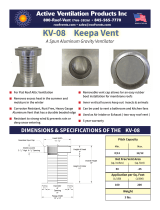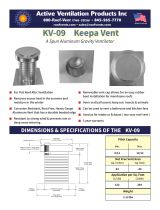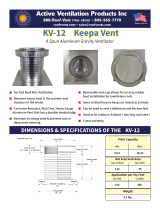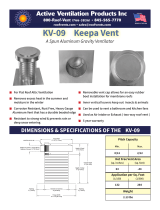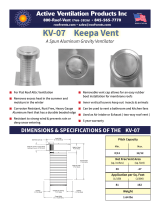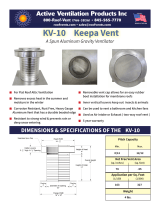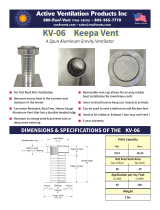Page is loading ...

8140705R9-10/08
As an ENERGY STAR
®
Partner, Burnham Hydronics has determined that the SCG meets the ENERGY
STAR
®
guidelines for energy efciency established by the United States Environmental Protection Agency (EPA).
Price - $5.00
DNAGNITAREPO,NOITALLATSNI
ROFSNOITCURTSNIECIVRES
™GCS
RELIOBDERIF-SAG
nonoitamrofnignikeesnehW.rotcartnocgnitaehruoyllac,reliobotsriaperroecivresroF
.lebaLgnitaRnonwohssarebmuNlaireSdnarebmuNledoMrelioBedivorp,reliob
rebmuNledoMrelioB
GCS
rebmuNlaireSrelioB etaDnoitallatsnI
rotcartnoCgnitaeH rebmuNenohP
sserddA

2
IMPORTANT INFORMATION - READ CAREFULLY
NOTE: The equipment shall be installed in accordance with those installation regulations enforced in the area where the
installation is to be made. These regulations shall be carefully followed in all cases. Authorities having jurisdiction
shall be consulted before installations are made.
All wiring on boilers installed in the USA shall be made in accordance with the National Electrical Code and/or local regulations.
All wiring on boilers installed in Canada shall be made in accordance with the Canadian Electrical Code and/or local regulations.
The following terms are used throughout this manual to bring attention to the presence of hazards of various risk levels, or to
important information concerning product life.
The New York City Department of Buildings has approved the SCG™ Series boiler: Approval No. MEA 5-06-E.
The City of New York requires a Licensed Master Plumber supervise the installation of this product.
The Massachusetts Board of Plumbers and Gas Fitters has approved the SCG™ Series boiler. See the Massachusetts Board of
Plumbers and Gas Fitters website, http://license.reg.state.ma.us/pubLic/pb_pre_form.asp for the latest Approval Code or ask
your local Sales Representative.
The Commonwealth of Massachusetts requires this product to be installed by a Licensed Plumber or Gas Fitter.
DANGER
Indicates an imminently hazardous situation
which, if not avoided, will result in death, serious
injury or substantial property damage.
CAUTION
Indicates a potentially hazardous situation which,
if not avoided, may result in moderate or minor
injury or property damage.
WARNING
Indicates a potentially hazardous situation which,
if not avoided, could result in death, serious injury
or substantial property damage.
NOTICE
Indicates special instructions on installation,
operation, or maintenance which are important
but not related to personal injury hazards.
DANGER
DO NOT store or use gasoline or other ammable vapors or liquids in the vicinity of this or any other
appliance.
If you smell gas vapors, NO NOT try to operate any appliance - DO NOT touch any electrical switch or use
any phone in the building. Immediately, call the gas supplier from a remotely located phone. Follow the gas
supplier’s instructions or if the supplier is unavailable, contact the re department.

3
WARNING
This boiler requires regular maintenance and service to operate safely. Follow the instructions contained
in this manual.
Improper installation, adjustment, alteration, service or maintenance can cause property damage, personal
injury or loss of life. Read and understand the entire manual before attempting installation, start-up
operation, or service. Installation and service must be performed only by an experienced, skilled, and
knowledgeable installer or service agency.
This boiler must be properly vented.
This boiler needs fresh air for safe operation and must be installed so there are provisions for adequate
combustion and ventilation air.
The interior of the venting system must be inspected and cleaned before the start of the heating season
and should be inspected periodically throughout the heating season for any obstructions. A clean and
unobstructed venting system is necessary to allow noxious fumes that could cause injury or loss of life
to vent safely and will contribute toward maintaining the boiler’s efciency.
Installation is not complete unless a pressure relief valve is installed into the tapping located on top of
appliance. - See the Water Piping and Trim Section of this manual for details.
This boiler is supplied with safety devices which may cause the boiler to shut down and not re-start
without service. If damage due to frozen pipes is a possibility, the heating system should not be left
unattended in cold weather; or appropriate safeguards and alarms should be installed on the heating
system to prevent damage if the boiler is inoperative.
This boiler contains very hot water under high pressure. Do not unscrew any pipe ttings nor attempt
to disconnect any components of this boiler without positively assuring the water is cool and has no
pressure. Always wear protective clothing and equipment when installing, starting up or servicing this
boiler to prevent scald injuries. Do not rely on the pressure and temperature gauges to determine the
temperature and pressure of the boiler. This boiler contains components which become very hot when
the boiler is operating. Do not touch any components unless they are cool.
Boiler materials of construction, products of combustion and the fuel contain alumina, silica, heavy metals,
carbon monoxide, nitrogen oxides, aldehydes and/or other toxic or harmful substances which can cause
death or serious injury and which are known to the state of California to cause cancer, birth defects and
other reproductive harm. Always use proper safety clothing, respirators and equipment when servicing
or working nearby the appliance.
Failure to follow all instructions in the proper order can cause personal injury or death. Read all instruc-
tions, including all those contained in component manufacturers manuals which are provided with the
boiler before installing, starting up, operating, maintaining or servicing.
Keep boiler area clear and free from combustible materials, gasoline and other ammable vapors or
liquids.
All cover plates, enclosures and guards must be in place at all times.
NOTICE
This boiler has a limited warranty, a copy of which is printed on the back of this manual. It is the responsibility
of the installing contractor to see that all controls are correctly installed and are operating properly when the
installation is complete.

4
Table of Contents
Figure 1: Minimum Clearances to Combustibles
I. Pre-Installation ...............................6
II. Unpack Boiler ................................
7
III. Venting/Air Intake Piping ..............
8
IV. Water Piping and Trim .................
45
V. Gas Piping ....................................
50
VI. Electrical .......................................53
VII. Modular Installation ....................
62
VIII. System Start-up ............................
64
IX. Service ..........................................71
X. Repair Parts ..................................
78

5
Figure 2: Dimensions

6
WARNING
If you do not follow these instructions exactly,
a re or explosion may result causing property
damage or personal injury.
DANGER
Do not install boiler where gasoline or other
ammable vapors or liquids, or sources of
hydrocarbons (i.e. bleaches, cleaners, chemicals,
sprays, paint removers, fabric softeners, etc.) are
used or stored.
NOTICE
Due to the low water content of the boiler, mis-
sizing of the boiler with regard to the heating
system load will result in excessive boiler cycling
and accelerated component failure. Burnham
DOES NOT warrant failures caused by mis-sized
boiler applications. DO NOT oversize the boiler to
the system. Modular boiler installations greatly
reduce the likelihood of boiler oversizing.
A. Installation must conform to the requirements of the
authority having jurisdiction. In the absence of such
requirements, installation must conform to the National
Fuel Gas Code, NFPA 54/ANSI Z223.1, and/or CAN/
CSA B149.1 Installation Codes.
B. Appliance is design certied for installation on
combustible ooring. Do not install boiler on
carpeting.
C. Provide clearance between boiler jacket and
combustible material in accordance with local re
ordinance. Refer to Figure 1 for minimum listed
clearance from combustible material. Recommended
service clearance is 24 inches from left side, right
side and front. Service clearances may be reduced to
minimum clearances to combustible materials.
D. Install on level oor. For basement installation provide
solid base such as concrete, if oor is not level or if
water may be encountered on oor around boiler. Floor
must be able to support weight of boiler, water and all
additional system components.
E. Protect gas ignition system components from water
(dripping, spraying, rain, etc.) during boiler operation
and service (circulator replacement, condensate trap,
control replacement, etc.).
I. Pre-Installation
F. Provide combustion and ventilation air in accordance
with applicable provisions of local building codes,
or: USA - National Fuel Gas Code, NFPA 54/ANSI
Z223.1, Air for Combustion and Ventilation;
Canada - Natural Gas or Propane Installation Code,
CAN/CSA-B149.1.
WARNING
Adequate combustion and ventilation air must
be provided to assure proper combustion.
The following guideline is based on the National Fuel Gas
Code, NFPA 54/ANSI Z223.1.
1. Determine volume of space (boiler room). Rooms
communicating directly with space (through
openings not furnished with doors) are considered
part of space.
Volume [ft³] = Length [ft] x Width [ft] x Height [ft]
2. Determine Total Input of all appliances in space.
Round result to nearest 1,000 Btu per hour (Btuh).
3. Determine type of space. Divide Volume by Total
Input.
a. If result is greater than or equal to 50 ft³ per
1,000 Btuh, space is considered an unconned
space.
b. If result is less than 50 ft³ per 1,000 Btuh, space
is considered a conned space.
4. Determine building type. A building of unusually
tight construction has the following characteristics:
a. Walls and ceiling exposed to outside atmosphere
have a continuous water vapor retarder with a
rating of 1 perm or less with openings gasketed
and sealed, and;
b. Weather-stripping has been added on openable
windows and doors, and;
c. Caulking or sealants applied in joints around
window and door frames, between sill plates and
oors, between wall-ceiling joints, between wall
panels, at plumbing and electrical penetrations,
and at other openings.
5. For boiler located in an unconned space in a
building of other than unusually tight construction,
adequate combustion and ventilation air is normally
provided by fresh air inltration through cracks
around windows and doors.

7
c. Horizontal ducts. Minimum free area of one (1)
square inch per 2,000 Btu per hour input of all
equipment in space. Duct cross-sectional area
shall be same as opening free area.
Alternate method for boiler located within
conned space. Use indoor air if two permanent
openings communicate directly with additional
space(s) of sufcient volume such that combined
volume of all spaces meet criteria for unconned
space. Size each opening for minimum free area
of one (1) square inch per 1,000 Btu per hour
input of all equipment in spaces, but not less than
100 square inches.
7. Combustion Air/Ventilation Duct Louvers and
Grilles. Equip outside openings with louvers to
prevent entrance of rain and snow, and screens to
prevent entrance of insects and rodents. Louvers and
grilles must be xed in open position or interlocked
with equipment to open automatically before burner
operation. Screens must not be smaller than ¼ inch
mesh.
Consider the blocking effect of louvers, grilles and
screens when calculating the opening size to provide
the required free area. If free area of louver or grille
is not known, assume wood louvers have 20-25
percent free area and metal louvers and grilles have
60-75 percent free area.
II. Unpack Boiler
CAUTION
Do not drop boiler. Do not bump boiler jacket
against oor.
A. Move boiler to approximate installed position.
B. Remove all crate fasteners.
C. Lift and remove outside container. Save two of the
wooden slats from the container sleeve for use in Steps
E and F.
D. Remove all boiler hold-down fasteners.
WARNING
Installation of this boiler should be undertaken
only by trained and skilled personnel from a
qualied service agency.
E. Tilt the boiler to its front side or back side and slide a
wooden slat under the three raised feet.
F. Tilt the boiler in the opposite direction and slide
another wooden slat under the three raised feet.
G. Slide the boiler left or right off the skid using the two
wooden slats as runners.
H. Move boiler to its permanent location.
NOTICE
Boilers operated with direct vent (sealed
combustion) are exempt from needing provisions
for combustion air from the room, provided
air intake piping is installed per Code and the
instructions in the manual.
6. For boiler located within
unconned space in building
of unusually tight construction or within conned
space, provide outdoor air through two permanent
openings which communicate directly or by duct
with the outdoors or spaces (crawl or attic) freely
communicating with the outdoors. Locate one opening
within twelve (12) inches of top of space. Locate
remaining opening within twelve (12) inches of bottom
of space. Minimum dimension of air opening is three
(3) inches. Size each opening per following:
a. Direct communication with outdoors. Minimum
free area of one (1) square inch per 4,000 Btu per
hour input of all equipment in space.
b. Vertical ducts. Minimum free area of one (1)
square inch per 4,000 Btu per hour input of all
equipment in space. Duct cross-sectional area
shall be same as opening free area.
CAUTION
If using indoor air for combustion (see Venting Section - Indoor Air), avoid operating this boiler in an
environment where saw dust, loose insulation bers, dry wall dust, etc. are present. If boiler is operated
under these conditions, the burner interior and ports must be cleaned and inspected daily to insure proper
operation.

8
III. Venting / Air Intake Piping
TABLE 1: AIR INTAKE / VENT SYSTEM OPTIONS
WARNING
Do not use this boiler with galvanized, Type 304 or Type 316 stainless steel, non metallic or any other
non AL29-4C
®
based vent systems.
Do not use a barometric damper or drafthood with this appliance.
Do not use vent dampers with this boiler.
Moisture and ice may form on surfaces around termination. To prevent deterioration, surfaces should
be in good repair (sealed, painted, etc.).
This appliance needs fresh air for safe operation and must be installed so there are provisions for
adequate combustion and ventilation air.
Do not reduce size of air intake pipe.
Read, understand and follow combustion air instruction restrictions contained in the Pre-Installation
instructions of this manual.
Do not operate appliance where gasoline or other ammable vapors or liquids, or sources of hydro-
carbons (i.e. bleaches, cleaners, chemicals, sprays, paint removers, fabric softeners, etc.) are used,
stored and/or present in the air.
When installing vent pipe through chimney, no other appliance can be vented into the chimney.
Do not exceed maximum vent/air intake lengths. Refer to Table 4.
Option Description
Additional
Vent Kit
Required
Part Number
Installation
Drawing and
Specication
(See Section)
1. Separate
Horizontal
Direct Vent (sealed combustion) with both the vent pipe and
air intake pipe terminating horizontally (through a sidewall)
with individual penetrations for the vent and air intake piping
and terminals.
No See Table 2 D.
2. Separate
Vertical
Direct Vent (sealed combustion) with both the vent pipe and
air intake pipe terminating vertically (through the roof) with
individual penetrations for the vent and air intake piping and
terminals.
No See Table 2 E.
3. Combination
Horizontal
Direct Vent (sealed combustion) with the vent pipe and air
intake pipe joining at a common terminal and terminating
horizontally (through a sidewall up to 15” thick) with only
one penetration.
Yes
3 - 6 Section
(61106012)
F.
4. Combination
Vertical
Direct Vent (sealed combustion) with the vent pipe and air
intake pipe joining at a common terminal and terminating
vertically (through the roof) with only one penetration.
Yes
3 - 4 Section
(100222-01)
5 - 6 Section
(100223-01)
G.
5. Indoor Air
Power Vent - Air used for combustion is provided from within
the building.
No ----- H.
6. Optional
Separate
Horizontal
Direct Vent (sealed combustion) with both the vent pipe and
air intake pipe terminating horizontally (through a sidewall)
with individual penetrations for the vent and air intake piping
and terminals.
No See Table 2 I.

9
TABLE 3: BURNHAM VENT SYSTEM AND AIR INTAKE SYSTEM COMPONENTS
TABLE 2: VENT SYSTEM COMPONENTS INCLUDED WITH BOILER
TABLE 4: VENT/AIR INTAKE LENGTH
Vent System Components Part Number
Gasketed Vent Terminal 3” Horizontal
(SCG-3 thru SCG-7)
8110701
Gasketed Vent Terminal 4” Horizontal
(SCG-8 & SCG 9)
8110702
Disc Air Intake - 3”
(SCG-3 & SCG-4)
6116045
Disc Air Intake - 4”
(SCG-5 & SCG-6)
6116044
Air Intake - 5”
(SCG-7 thru SCG-9)
6116063
Vent System Component Part Number
Equivalent
Feet of Pipe
3” Dia. Pipe x 1 Ft 8116296U
1
4” Dia. Pipe x 1 Ft 100176-01
3” Dia. Pipe x 3 Ft 8116298U
3
4” Dia. Pipe x 3 Ft 100177-01
3” Dia. Pipe x 5 Ft 8116300U
5
4” Dia. Pipe x 5 Ft 100178-01
3” Dia. Pipe x Adjustable 8116319U
Equal to
Installed Length
(1.06 TO 1.64)
4” Dia. Pipe x Adjustable 100179-01
3” Dia. 90° Elbow 8116294U
5
4” Dia. 90° Elbow 100180-01
3” Dia. 45° Elbow 8116292U
5
4” Dia. 45° Elbow 100181-01
3” Dia. Horizontal Drain Tee 8116302U
2
4” Dia. Horizontal Drain Tee 100182-01
3” Dia. Vertical Drain Tee 8116304U
7½
4” Dia. Vertical Drain Tee 100183-01
3” Single Wall Thimble 8116116
---
4” Single Wall Thimble 100184-01
3” Double Wall Thimble 8116115
---
4” Double Wall Thimble 100185-01
Intake System Components
(Parts by Others)
Equivalent
Feet of Pipe *
3”, 4”, or 5” ID Pipe x 1 Ft 1
3”, 4”, or 5” ID Pipe x 2 Ft 2
3”, 4”, or 5” ID Pipe x 4 Ft 4
3”, 4”, or 5” ID Pipe x 5 Ft 5
3”, or 4” 90° Elbow 5
3”, or 4” 45° Elbow 5
5” 90° Elbow 6
5” 45° Elbow 6
* Equivalent Feet of Pipe Based on
Standard 4” Smoke Pipe Design
Model
3” Air Intake Pipe
(Equiv. Ft.)
4” Air Intake Pipe
(Equiv. Ft.)
5” Air Intake Pipe
(Equiv. Ft.)
3” Vent Pipe
(Equiv. Ft.)
4” Vent Pipe
(Equiv. Ft.)
Min. Max. Min. Max. Min. Max. Min. Max. Min. Max.
SCG-3 & SCG-4 8 50 --- --- --- --- 8 50 --- ---
SCG-5 & SCG-6 --- --- 8 50 --- --- 8 50 --- ---
SCG-7 --- --- --- --- 8 50 8 50 --- ---
SCG-8 & SCG-9 --- --- --- --- 8 40 --- --- 8 40

10
A. Vent Guidelines Due to Removal of an Existing
Boiler
For installations not involving the replacement of an
existing boiler, proceed to Step B.
When an existing boiler is removed from a common
venting system, the common venting system is likely
to be too large for proper venting of the remaining
appliances. At the time of removal of an existing
boiler, the following steps shall be followed with each
appliance remaining connected to the common venting
system placed in operation, while the other appliances
remaining connected to the common venting system are
not in operation:
1. Seal any unused openings in the common venting
system.
2. Visually inspect the venting system for proper
size and horizontal pitch and determine there is no
blockage or restriction, leakage, corrosion, and other
deciencies which could cause an unsafe condition.
3. Insofar as is practical, close all building doors and
windows and all doors between the space in which
the appliances remaining connected to the common
venting system are located and other spaces of the
building. Turn on clothes dryers and any appliance
not connected to the common venting system.
Turn on any exhaust fans, such as range-hoods and
bathroom exhausts, so they will operate at maximum
speed. Do not operate a summer exhaust fan. Close
replace dampers.
4. Place in operation the appliance being inspected.
Follow the Lighting (or Operating) Instructions.
Adjust thermostat so appliance will operate
continuously.
5. Test for spillage at the draft hood relief opening
after ve (5) minutes of main burner operation. Use
the ame of a match or candle, or smoke from a
cigarette, cigar or pipe.
6. After it has been determined that each appliance
remaining connected to the common venting system
properly vents when tested as outlined above, return
doors, windows, exhaust fans, replace dampers and
any other gas burning appliance to their previous
conditions of use.
7. Any improper operation of the common venting
system should be corrected so the installation
conforms with the National Fuel Gas Code, NFPA
54/ANSI Z223.1. When resizing any portion of the
common venting system, the common venting
system should be resized to approach the minimum
size as determined using the appropriate tables in
Part II in the National Fuel Gas Code, NFPA 54/
ANSI Z223.1.
B. General Guidelines
1. Vent system installation must be in accordance
with National Fuel Gas Code, NFPA 54/ANSI
Z221.3 or applicable provisions of local building
codes. Contact local building or re ofcials about
restrictions and installation inspection in your area.
2. The SCG is designed to be installed as either
a Direct Vent boiler or Power Vent boiler. In
the Direct Vent conguration all of the air for
combustion is supplied directly to the burner
enclosure from outdoors and ue gases are vented
directly outdoors (through wall or roof). In the
Power Vent conguration, room air provides air
for combustion and ventilation. Flue gases are still
vented directly outdoors (through wall or roof).
Note: Venting requirements change if indoor air is
used.
3. Refer to the appropriate drawings in this section of
this manual to determine the proper conguration of
venting system. See Table 1.
4. This appliance requires a Special Gas Vent. The
product is designed to use Burnham supplied
AL 29-4C
®
Stainless Steel vent system components.
The following manufacturers offer similar
AL 29-4C
®
components and are approved for use
with this product. Heat-Fab Inc. - Saf-T-Vent (800-
772-0739); Flex-L International Inc. - Star-34 (800-
561-1980); Z-Flex U. S., Inc. - Z-Vent (800-654-
5600); and Protech Systems, Inc.- FasNSeal™ (800-
766-3473) or equivalent. The use of these alternate
manufacturer’s venting systems will require
adapters to connect to the Burnham supplied vent
connector and vent terminal. These adapters are not
supplied with this unit and should be obtained from
the supplier of the alternate manufacturer’s venting
system. See Table 3 for complete list of Burnham
Vent System Components.
5. Horizontal vent pipe must maintain a minimum ¼
inch per foot slope down towards boiler.
6. Use noncombustible ¾ inch pipe strap to support
horizontal runs and maintain vent location and
slope while preventing sags in pipe. Do not restrict
thermal expansion or movement of vent system.
Maximum support spacing is ve (5) feet. Do not
penetrate any part of the vent system with fasteners.
7. Vent length restrictions are based on equivalent
length of vent/air pipe (total length of straight
pipe plus equivalent length of ttings). Maximum
vent/air lengths are listed in Table 4. Do not exceed
maximum vent/air intake lengths. Table 3 lists
equivalent lengths for ttings. Do not include vent/
air terminals in equivalent feet calculations.
8. Provide and maintain vent pipe minimum clearances
to combustible materials. Vent pipe minimum
clearance to combustible material is four (4) inches
when vent is installed in a fully enclosed (chase)
application or three (3) inches when vent is installed

11
with at least one side open, similar to a joist bay
application. Use double wall thimble [Burnham
Part No. 8116115 (3”), 100185-01 (4”)] when
penetrating a combustible wall.
9. Do not install venting system components on
the exterior of the building except as specically
required by these instructions. The vent termination
location is restricted as follows:
a. Minimum twelve (12) inches above grade plus
normally expected snow accumulation level, or
seven (7) feet above grade if located adjacent
to public walkway. Do not install over public
walkway where local experience indicates
appliance ue gas vapor or condensate creates a
nuisance or hazard.
b. Minimum three (3) feet above any forced air
inlet located within ten (10) feet.
c. Direct Vent - Minimum one (1) foot below, one
(1) foot horizontally from, or one (1) foot above
any door, window, or gravity air inlet.
Power Vent - Minimum four (4) feet below, four
(4) feet horizontally from, or four (4) feet above
any door, window, or gravity air inlet.
d. Minimum four (4) feet horizontally from electric
meters, gas meters, regulators, and relief valves.
This distance may be reduced if equipment is
protected from damage due to condensation or
vapor by enclosure, overhangs, etc.
e. Minimum twelve (12) inches from overhang or
corner of building.
10. Enclose vent passing through occupied or
unoccupied spaces above the boiler with material
having a re resistance rating of at least equal to the
rating of the adjoining oor or ceiling. Maintain
minimum clearances to combustible materials. See
Figure 1.
Note: For one or two family dwellings, re
resistance rating requirement may not need to be
met, but is recommended.
11. Plan venting system to avoid possible contact with
plumbing or electrical wires. Start at vent connector
on top of boiler and work towards vent terminal.
12. Once a vent pipe manufacturer and system is chosen
never mix and match vent systems.
13. If a non-standard length pipe is required:
Gasketed Vent System: The use of the adjustable
length pipe (P/N 8116319U) is recommended to
complete a non-standard pipe length. This pipe
requires a minimum installed length of 12¾ inch
and can adjust across a 7 inch gap up to a maximum
of 19¾ inch long. (Note for the adjustable pipe
the installed length should be measured from the
centerline of the bead on the male end of the rst
pipe to the end of the female pipe excluding the
locking band of the second pipe with a single
gasket.) Only in the event the adjustable length pipe
is not sufcient a standard length pipe may be cut
using the procedure outlined below for the Gasket-
Less Vent System.
WARNING
Never exceed maximum installed length of 19¾
inches for adjustable length pipe.
Risk of ue gas leakage is possible.
NOTICE
Cut must be square with pipe and led or
sanded smooth before joining. Carefully ensure
roundness of cut pipe by hand with gloves before
installing. Seal joint with RTV specied in this
manual.
C. Install Vent Pipe, Burnham Gasketed Vent System.
1. Procedure for Joining Burnham Gasketed Vent Pipe
and Fittings. See Figure 3.
Figure 3: Burnham Gasketed Vent Joint Detail

12
a. Wipe the male end of each joint using an alcohol
pad to remove any dirt and grease.
b. Align weld seams in pipes and use a slight
twisting motion to FULLY insert male end into
female end of joint. Ensure bead in male end
of pipe is below locking band and rest against
the end of the female pipe. Verify the factory-
installed gasket is not dislodged or cut.
c. Tighten locking band by HAND with a 5/16”
nut driver until snug plus ¼ turn. DO NOT
SECURE JOINTS WITH SHEET METAL
SCREWS OR POP RIVETS. DO NOT
PUNCTURE THE VENT SYSTEM!
d. Once the installation is complete, operate
appliance and inspect all joints to ensure that ue
gases and/or liquid condensate will not escape.
D. Separate Horizontal Venting System. See Figures
4A, 4B, 5A and 5B. See Figure 43 on Page 72 for
Blower Vent Connector Assembly.
Vent Piping –
1. This boiler is supplied with components as standard
equipment for installation of the separate horizontal
venting system.
2. Do not exceed maximum vent/air intake lengths.
Refer to Table 4.
3. Recommended horizontal installation consists
of vent being sloped down ¼ inch per foot away
from boiler. See Figure 4A. See Figure 48 for an
alternate horizontal installation.
4. Use appropriate designed thimbles when passing
through combustible walls (thimble use optional for
noncombustible walls). Insert thimble through wall
from outside. Secure outside ange to wall with
nails or screws, and seal ID, OD and vent holes with
sealant material. Install inside ange to inside wall,
secure with nails or screws, and seal with sealant
material.
5. For noncombustible wall application when thimble
is not used, size opening such that bell with locking
band attached cannot pass through.
6. Join vent terminal to vent pipe. See Figures 5A and
5B.
7. Insert vent pipe through thimble/opening from
outside and join to vent system. Apply sealant
between vent pipe and opening/thimble to provide
weathertight seal.
Air Intake piping - See Figures 4A, 4B, 5A and 5B.
8. Locate air intake termination on the same wall as
the vent termination if possible, to prevent nuisance
boiler shutdowns. However, boiler may be installed
with vertical venting and sidewall combustion air
inlet or visa versa, if installation conditions do not
allow alternate arrangement.
9. Do not exceed air intake length. See Table 4.
10. Use single wall metal or PVC pipe.
a. Air intake pipe diameter is based on boiler size.
SCG-3 & SCG-4 uses 3 inch diameter piping.
SCG-5 & SCG-6 uses 4 inch diameter piping.
SCG-7 thru SCG-9 uses 5 inch diameter piping.
11. Air intake termination must be located:
Horizontal - At least twelve (12) inches above
grade plus the expected snow accumulation.
12. Start at collar on boiler jacket and work towards the
air intake terminal.
13. Maintain minimum of ¼ inch per foot slope on
horizontal runs. Slope towards air inlet terminal
when possible. If not, slope towards boiler.
14. The air intake pipe must be adequately supported
with straps or supports no less than ve (5) feet
apart on horizontal runs. The complete air intake
piping system must be rigid and able to withstand
minor impacts without collapse.
15.
Inlet air pipe penetration:
Horizontal - Size wall penetration to allow easy
insertion of air inlet piping. Seal around pipe with
sealant to form weathertight exterior joint.
16. Seal all joints airtight, using silicone caulk or self-
adhesive aluminum tape.
17.
Install Air Intake Terminal:
Horizontal - Remove four (4) screws from cover
plate and remove cover plate from terminal. Insert
intake piping into intake terminal collar. Secure
terminal to intake piping and seal joint with silicone
caulk or self-adhesive aluminum tape. Apply
continuous bead of silicone caulk around the back
of the intake terminal, approximately ¼ inch from
its edge. Push inlet terminal inward until terminal’s
back ange is against the wall surface. Secure the
terminal with noncorrosive fasteners (stainless steel,
brass or aluminum) to the wall. Reinstall the cover
plate with four (4) screws. Apply a bead of silicone
caulk to perimeter of intake terminal’s back ange
to provide a weathertight seal.

13
Figure 4A: Recommended Separate Horizontal – Vent/Air Intake Installation

14
Figure 4B: Alternate Separate Horizontal – Vent/Air Intake Installation

15
Figure 5A: Separate Horizontal – Vent/Air Intake Terminal Conguration (SCG-3 thru 7)

16
Figure 5B: Separate Horizontal – Vent/Air Intake Terminal Conguration (SCG-8 and 9)

17
Vertical Venting –
1. See Figure 43 on Page 72 for Blower Vent
Connector Assembly. Do not exceed maximum vent
lengths. Refer to Table 4.
2. Installation of a vertical vent drain tee 8116304U
is required on all vertical vent applications. See
Figures 6 and 7. Attach vertical vent drain tee
directly to elbow or horizontal pipe from an elbow
immediately after vent connector.
3. Slope horizontal runs minimum ¼ inch per foot.
Slope towards vertical vent drain tee. Position weld
seams in vent pipes, in all horizontal runs, at the top
to avoid condensate from lying on the seams.
4. Install re stops where vent passes through oors,
ceilings or framed walls. The re stop must close
the opening between the vent pipe and the structure.
5. Whenever possible, install vent straight through
the roof. Refer to Figure 7 if offset is necessary.
Maintain minimum clearance to combustible
materials.
6. Install Vent Terminal.
a. Size roof opening to maintain minimum
clearance from combustible materials.
b. Extend vent pipe to maintain minimum vertical
and horizontal distance of twelve (12) inches
from roof surface. Allow additional vertical
distance for expected snow accumulation.
Provide brace as required. Refer to Figures 8A
and 8B.
NOTICE
Vertical venting requires the use of roof ashing
and a storm collar to prevent moisture from
entering the structure.
c. Install storm collar on vent pipe immediately
above ashing. Apply Dow Corning Silastic 732
RTV Sealant between vent pipe and storm collar
to provide weathertight seal.
d. Attach vent terminal.
Vertical Air Intake Piping –
7. Do not exceed maximum air intake length. Refer to
Table 4.
8. Locate air intake termination on the same roof
location as the vent termination if possible, to
prevent nuisance boiler shutdowns. However, boiler
may be installed with vertical venting and sidewall
combustion air inlet or visa versa, if installation
conditions do not allow alternate arrangement.
9. Use single wall metal pipe or PVC and ttings
available at most heating distributors.
a. Air intake pipe diameter is based on boiler size.
SCG-3 & SCG-4 uses 3 inch diameter piping.
SCG-5 & SCG-6 uses 4 inch diameter piping.
SCG-7 thru SCG-9 uses 5 inch diameter piping.
10. Air intake termination must be located:
Vertical - At least twelve (12) inches above the roof
surface plus the expected snow accumulation.
11. Start at collar on burner enclosure (inside boiler
jacket) and work towards the air intake terminal.
12. Maintain minimum of ¼ inch per foot slope on
horizontal runs. Slope down towards boiler.
13. The air intake pipe must be adequately supported
with straps or supports no less than ve (5) feet
apart on horizontal runs. The complete air intake
piping system must be rigid and able to withstand
minor impacts without collapse.
14. Inlet air pipe penetration:
Vertical - Size roof opening to allow easy insertion
of inlet piping and allow proper installation of
ashing and storm collar.
a. Use appropriately designed vent ashing
when passing through roofs. Follow ashing
manufacturers’ instructions for installation
procedures. Flashing manufacturers are Air-
Jet, American Metal Products, Metal Fab, and
Simpson Dura-Vent.
b. Extend air intake pipe to maintain minimum
vertical and horizontal distance of twelve
(12) inches from roof surface. Allow
additional vertical distance for expected snow
accumulation. Provide brace as required. Refer
to Figures 8A and 8B.
c. Vertical air intake requires ashing and a storm
collar to prevent moisture from entering the
structure.
E. Separate Vertical Venting System - See Figures 6, 7, 8A, 8B and 9.
NOTICE
Roof penetrations require the use of roof ashing
and storm collar - not supplied with boiler.

18
d. Install storm collar on air intake pipe
immediately above ashing. Apply Dow
Corning Silastic 732 RTV Sealant between
air intake pipe and storm collar to provide
weathertight seal.
e. All exposed air intake piping must be
constructed of corrosion resistant material such
as aluminum, stainless steel or PVC.
15. Seal all joints airtight, using silicone caulk or self-
adhesive aluminum tape.
16. Install Air Intake Terminal:
Vertical - Insert intake piping into intake terminal
collar. Secure terminal to intake piping and seal
joint with silicone caulk.

19
Figure 7: Attic OffsetFigure 6: Vertical Vent Installation

20
Figure 8A: Vertical Vent/Air Termination (3” Vent Terminal)
Extend Vent/Air Intake Piping to maintain minimum vertical (“X”) and minimum horizontal (“Y”) distance of twelve (12) inches from
roof surface. Allow additional vertical (“X”) distance for expected snow accumulation.
/
